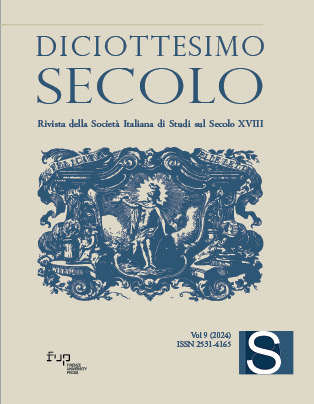Published 2024-10-07
Keywords
- Philosophical irony,
- Stendhal (Henri Beyle)
How to Cite
Copyright (c) 2024 Valentina Sperotto

This work is licensed under a Creative Commons Attribution 4.0 International License.
Abstract
Enlightenment philosophers often used irony in a philosophical manner. But irony is an ambiguous and complex figure of speech that can take on philosophical or anti-philosophical value, depending on the uses made of it. Diderot extensively resorts to irony throughout his works, even in unsuspected places in the Encyclopédie, but can we detect a philosophical use of this figure of speech in works of aesthetics as well? The Salon 1765 is considered here as an emblematic moment of Diderot’s reflection on the visual arts, in which irony is linked to the effort of objectivity of the art critic and to the one of the writer who intends to convey the emotion of the painting to the reader, even when it is negative. Irony therefore seems to perform two main functions: 1) to point out an inappropriate choice of subject (when this demonstrates the sterility of the artist’s ideas or licentious subjects that contradict the moral purpose of the pictorial or sculptural work); 2) to make those who read and cannot see the painting empirically understand its defect of composition, design, colour, rhythm. The irony, which is incorporated in the description, thus gives it a critical and emotional value at the same time, aimed at exercising and educating the readers’ taste.

